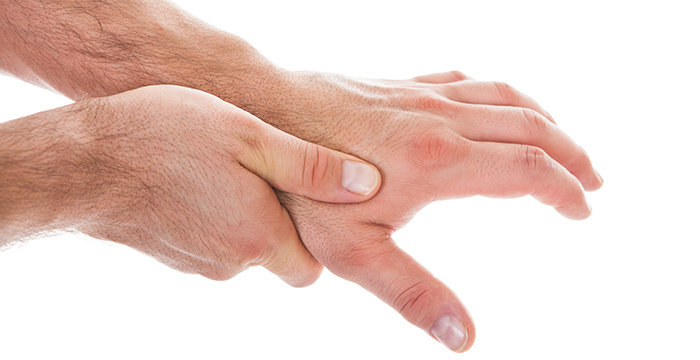
Does it hurt to pinch or grab items, even light ones? Is opening a jar your worst nightmare? Do you have pain and/or inflammation at the base of your thumb and nowhere else? You may have osteoarthritis (OA) in the carpometacarpal (CMC) joint of your thumb. This joint is where your thumb and wrist meet. Most people associate OA with hips or knees, but it can also happen at the base of the thumb.
Commonly known as the wear-and-tear disease, OA is a condition where the articular cartilage—cartilage that covers the ends of bones where they form joints—breaks down to the point where the bones are rubbing against each other. In addition to cartilage breakdown, sometimes bone spurs—or osteophytes—can form in between the affected joint. These factors contribute to the pain you experience when using your thumb to do functional tasks, such as flossing, opening jars, or grasping objects. The pain can range from mild to severe, but it can affect every aspect of your life without treatment.
While there is currently no cure for OA, there are ways to treat the symptoms and live your life pain-free while still doing the things you love. If you are experiencing these symptoms, see your doctor right away. She or he will be able to diagnose it with imaging technology, such as x-rays and MRIs, and give you options for medicine, therapy, and/or surgery.
What would occupational or physical therapy treatment entail?
- Joint protection techniques (simple modifications to daily tasks to reduce pain at joint and to utilize other muscles of the body)
- Orthosis (splint) recommendation that best fits your unique lifestyle and needs
- Increasing stability at the joint by strengthening specific muscles
- Recommendation of adaptive devices (i.e. modified jar opener, wider grips on utensils or pens)
- Reducing pain with therapeutic modalities (i.e. pulsed ultrasound, heat) and soft tissue mobilization
Source
Cooper, C. (2014). Fundamentals of Hand Therapy: Clinical Reasoning and Treatment Guidelines for Common Diagnoses of the Upper Extremity (2nd ed.). St. Louis, MO: Elsevier Inc.

